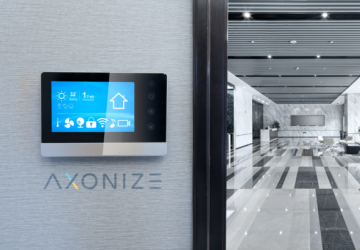
The new standard for lease accounting IFRS 16 was announced back in 2016. The deadline for organisations to comply was set at 1 January 2019. So, although this deadline has already passed, many organisations are still discovering the amount of work needed to achieve compliance. Some organisations have underestimated the implications and are now facing a race against time. If you are faced with current software unable to meet the compliance criteria, what are the options?
As explained in one of my previous blogs, under the previous standard IAS 17, an organisation that leases assets (such as equipment and office space) was not required to report such leases as operating leases on its balance sheet. However, IFRS 16 now forces lessees to report almost all leased assets. As a consequence, balance sheets have become lengthier and leverage ratios (total assets divided by equity) have increased.
Three reasons why Excel does not solve the problem
The new standard means that organisations have to change the way contracts are reported and managed to provide the correct financial information. Most of you were probably managing your contracts by using relatively simple tools such as Microsoft Excel, as formerly, the calculation of lease costs was usually not cumbersome. Costs over the term of a contract were basically divided by straight lining. As significant changes do not occur that often, it was, therefore, relatively easy to amend a contract at renewal or termination.
However, IFRS 16 has brought major challenges for organisations that use Excel for contract management. There are three reasons for this.
- Firstly, calculations are now much more complex due to the financial lease characteristics of most leases and data that has to be considered for the calculations.
- Secondly, all changes and reasonably certain changes in a contract must be taken into account, which means a higher degree of contract management activity, and a more urgent need for information disclosure beyond the figures.
- The third reason is that the results of the calculation have a direct impact on the balance sheet. Since 1 January 2019, there has been more scrutiny on assets and liabilities for leases and the process for their calculation and publication. So, given all this, it is really not easy to use Excel or Excel-based tool as a compliance solution.
Organisations need to look at other solutions that support this new way of contract management. Financial reporting for IFRS 16 is an end-to-end process including technology, data collection, IFRS 16 interpretation and change management. This means that any software solution demands significantly more from a software supplier and must go beyond the capabilities of Excel.
What you should expect from your supplier
A supplier should understand the new standard and must be able to explain how organisations can become compliant. In addition, the supplier must supply software that is not only capable of managing financial numbers, but that can also actively manage asset leases and the information for disclosure. If the system is to calculate changes, it must also be able to determine the reason for that change, with a direct link to the business. This calls for a supplier that thoroughly understands both accountancy and the realm of property and asset management.
Finally, the supplier must also be able to move quickly to implement the new standard, because organisations must now take urgent steps to achieve compliance as the deadline has already passed. Fortunately, the IFRS 16 standard does offer a number of options for pragmatic implementation, options that are not only useful now but for years to come for a continued pragmatic approach.
So, if your organisation is not yet compliant to IFRS 16 - and there are many of them – our advice is to keep it simple and choose a pragmatic method. To achieve fast compliance, resist any temptation to be too detailed and resist selecting very complicated options. Whilst the new rules can be quite complex, there is simply little time left for complexity. When time is short, keep it simple.
Are you interested in hearing about a practical implementation of IFRS 16 using Planon's software? If so, then please watch this webinar in which Heineken shares its story and lessons learned.





















